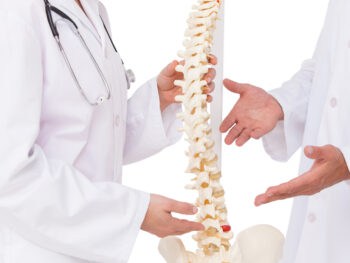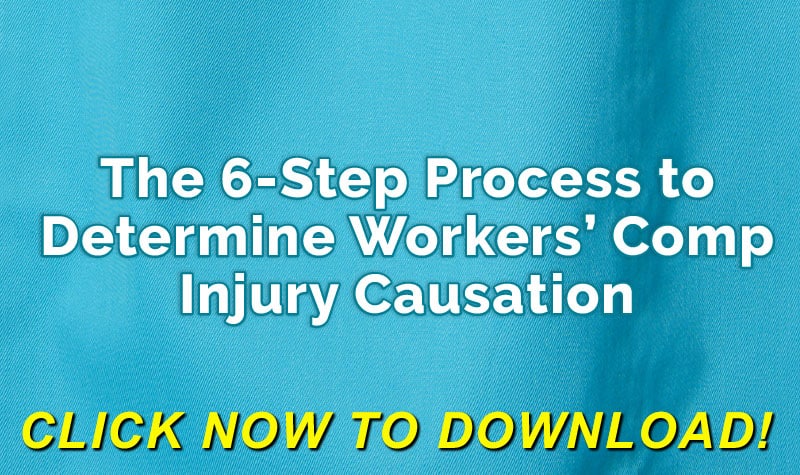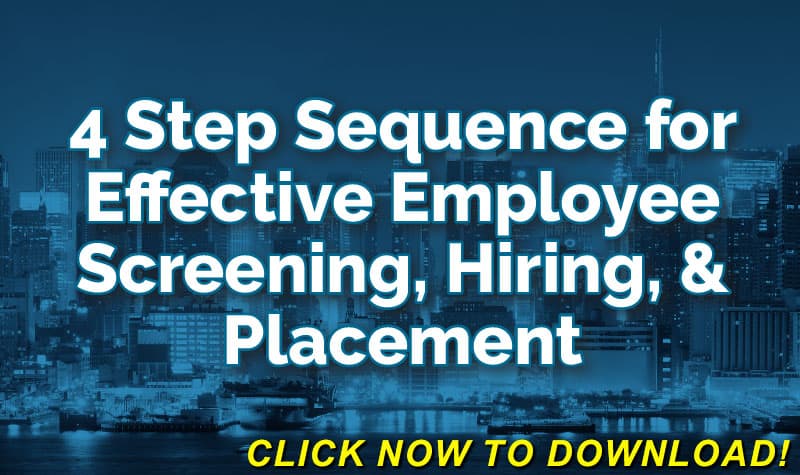An Interview with Doctor Alice Martinson
We hear a lot about the rising cost of workers compensation when injured workers suffer from co-morbid conditions. What is “comorbidity?”
Co-morbidity refers to any unrelated medical condition, which nonetheless has some bearing on the primary condition under discussion, or upon an individual’s ability to return to a functional level. An example of this would be a chronic cardiac condition delaying or preventing surgery in someone who has work-related knee osteoarthritis. Another, though somewhat graphic example, is an individual with a leg amputation who sustains an injury to two of the remaining three extremities. Given the number of returning Middle East veterans who are amputees, this is not such a far-fetched possibility.
How do you define obesity?
Obesity is defined in terms of body mass index (BMI). A BMI between 25 and 30 is considered “overweight.” A BMI over 30 is considered obesity, and a BMI over 40 is considered extreme obesity. In some written material it is called “morbid obesity.” This latter term is falling out of favor because it can carry an emotionally-charged meaning getting in the way of useful discussion. BMI is calculated as the relationship between height and weight. (WCxKit)
Rather than fooling with the math, I use a very convenient table available on the NIH website: Calculate BMI
Workers compensation will usually not cover that portion of a workplace injury related to a comorbid condition. How can the workplace injury be separated from the pre-existing condition for compensation?
For workers compensation treatment, that is not usually a hard distinction to make. A good example here would be carpal tunnel syndrome in a diabetic. Diabetes does not cause carpal tunnel syndrome, but diabetics will many times experience progression of the condition, once it occurs, at a much faster rate than non-diabetics do. Thus, surgical decisions and timing may well be affected by the diabetic state.
Where it gets harder within the workers compensation system is the question of whether a co-morbid condition interfering with the treatment of a workers compensation problem should be treated through the workers compensation system.
The most frequent instance of this I have come across is the question of whether bariatric (weight loss) surgery should be covered by workers compensation when the primary injury is knee trauma. Continued obesity in the face of a knee injury is inviting progressive osteoarthritis, so the question comes up – “Is bariatric surgery necessary to cure or relieve the effects of the work injury?” A similar example would be when a serious cardiac condition is found that interferes with necessary surgical treatment of a work injury.
Should treatment of the cardiac condition be provided under workers compensation?
There are different policies and case law in each state, so I would encourage anyone who encounters this issue to check for the rulings in their particular locale.
What pro-active steps can an employer take to communicate to employees their pre-existing conditions are not covered in the event of a workplace injury before injuries occur in a way that does not cause “uproar,” i.e., hurt feelings, cries of discrimination, threats of lawsuits?
The key word in your question is “pro-active.” Certainly, employees need to be educated about health maintenance issues and policies as general principles BEFORE a specific instance workplace injury brings up a specific question in a specific individual. Many large employers have incentive programs for smoking cessation, weight loss, and similar issues further reinforcing the importance the employer places on avoidable problems. There are enough benefits to these programs, that I encourage even small employers to adopt wellness programs as part of their employee policies.
Do you recommend pre-employment/post-offer screening for pre-existing conditions?
Except in the unusual case of extraordinarily critical or demanding work, pre-employment/post-offer screening using such things as spine X-Rays does not seem to be cost-effective. It is always appropriate to obtain a history of pre-existing conditions after an offer is made, because no one can predict the future but it is a great way to document the past. Having a starting point is very beneficial if the question of work-related progression or aggravation comes up. The best pre-employment screening I know of is not screening of the employees, but of the physical demands of the job for which an employee is sought. (WCxKit)
Can you explain what you mean by having the employer screen the physical demands of the job?
The more physically demanding the job, the greater the opportunity for something bad to happen to an individual doing it. An employer must know the physical demands of the job tasks. This is not rocket-science. A 5’2” woman weighing 130 lbs should not be hired to lift and carry cartons about a warehouse that are almost as tall as she is. You laugh! Several months ago I was doing a workers compensation exam on just such a woman doing just such a task. Or a more subtle instance — someone with knee pathology (problems) is not suitable for a job requiring constant squatting or climbing stairs and ladders. If you know those are the physical qualifications of the position, you as the employer have every right, and perhaps the responsibility, to determine if a prospective employee meets those qualifications. What is important is to determine the physical qualifications in advance, just as you do with education, temperament, ability to work without supervision, and so many of the other non-physical aspects in any job description. When you decide on an individual’s suitability for hiring into a specific position, you then have the opportunity to choose the whole package. A physical therapy or rehabilitation firm can often do a physical demands evaluation of the jobs in your facility.
As an example – a clerk is hired into a prison office. The only problem is it takes a half-mile of walking each way from the parking lot to her job. You would never know that from her job description. Some folks cannot do that. Same thing for some work settings where the employee works on one floor and the bathroom is on another. Do not think that does not happen – the IRS office in Fresno is exactly like that.
Does the ADA come into play when dealing with employees with comorbid conditions?
The ADA requires “reasonable accommodations” for an individual who declares a disability. An employer should decide in advance how to define “reasonable” in their setting. Obviously, a bricklayer with a pre-existing back disability cannot be reasonably accommodated in another brick laying job. On the other hand, there are a great number of office jobs in which individuals with back disability can be reasonably accommodated by altering the seating or the supervisor’s expectations in regard to the need to get up and change positions periodically.
What can employers do to reduce comorbid obesity in their workers and make them less likely to suffer workplace injuries aggravated by their condition?
Peer pressure is a wonderful thing. If all workers are educated about wellness issues and buy into proactive wellness efforts, getting an obese individual working towards his or her own wellness should not be too hard. It has to be a group effort for support and encouragement. That is one of the principles behind Weight Watchers, the 12-step programs, and – for that matter – TV’s “The Biggest Loser.”
What do you think about employer-sponsored wellness programs?
I am clearly in favor of them. They have to be properly designed and incentivized in order to be effective. That means the leadership needs to be involved in them too, and there has to be public recognition and tangible benefits – even small ones – to encourage ongoing participation
Are there any “pre-canned” programs out there an employer can use rather than reinventing the wheel? Do you recommend them?
Each program has to be tailored for the specific work situation. Something is better than nothing, but whenever feasible I would suggest seeking the advice and participation of a consultant who is experienced in these issues and has a track record of success they can point to. (WCxKit)
There is a really good article in the magazine Inc. that addresses these programs. See How to Build a Wellness Program.
Author: Alice M. Martinson, MD has practiced for 40 years as a board-certified orthopaedic surgeon, 25 of which were as a Naval Medical Officer. Relying on her extensive military experience with injury evaluation, she performs IMEs and consults on loss control issues. Contact: 870-480-7475 or docalice@aol.com. To read more about "Doc Alice,” go to our Directory at: http://reduceyourworkerscomp.com/workerscomp-medical-doctor-advisors.php.
WORK COMP CALCULATOR: www.LowerWC.com/calculator.php
MODIFIED DUTY CALCULATOR: www.LowerWC.com/transitional-duty-cost-calculator.php
SUBSCRIBE: Workers Comp Resource Center Newsletter
Do not use this information without independent verification. All state laws vary. You should consult with your insurance broker or agent about workers comp issues.
©2011 Amaxx Risk Solutions, Inc. All rights reserved under International Copyright Law. If you would like permission to reprint this material, contact Info@ReduceYourWorkersComp.com.













